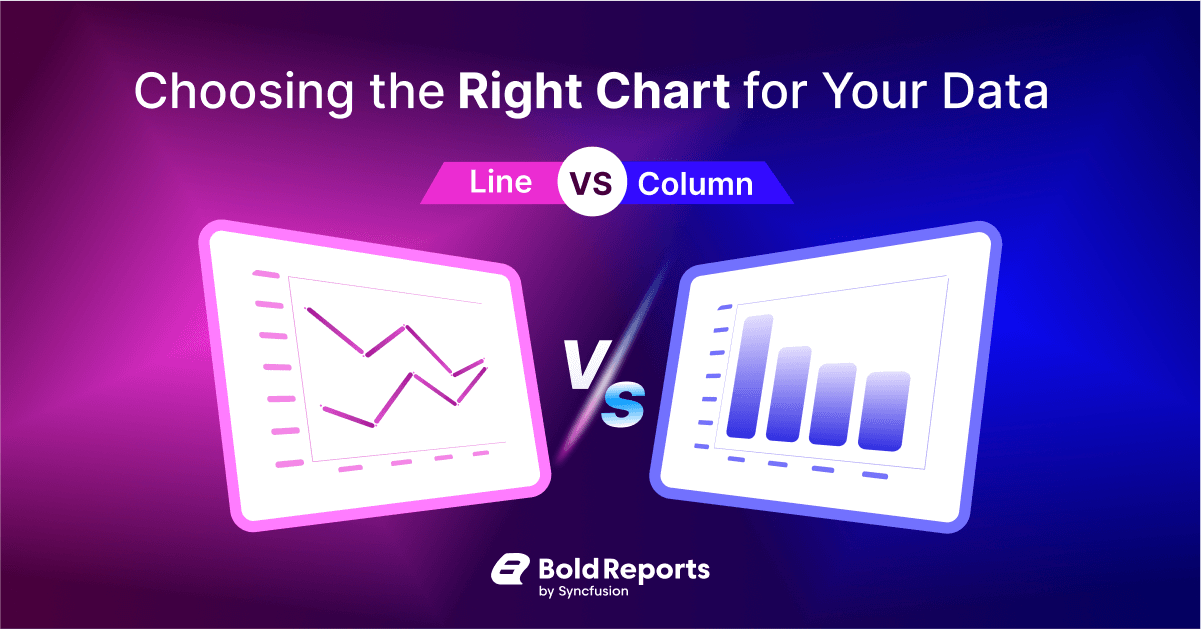Choosing the Right Chart for Your Data: Line vs. Column
 Bold Reports Team
Bold Reports Team
Choosing the right chart, line vs. column is important for effective data visualization. Line charts and column charts each offer unique advantages, yet determining which best suits your data can be challenging. In this blog, we will look into the distinct features of both chart types, helping you choose the correct option for your data presentation.
What is a line chart?
A line chart allows you to showcase data over time for trend analysis, with data points connected by straight lines.
When to use line charts
Displaying trends: Line charts can be used to reveal trends in data points across a continuous timeline.
Comparing multiple data series: When you want to compare several variables at the same time, line charts are ideal.
Highlighting changes: Line charts effectively showcase changes over time.
Forecasting: If you aim to predict future outcomes based on past data, line charts can provide a visual representation of trends that helps in making informed predictions.
Continuous data: For data sets that flow continuously, such as speed or temperature, line charts capture the essence of the data’s nature, providing clarity in understanding fluctuations.
When not to use line charts
When displaying relationships involving more than two variables.
If your goal is to emphasize particular data points rather than trends, a line chart may not serve your purpose.
If you only have a few data points, a line chart may not effectively convey your message.
The following line chart illustrates the administrative spending of a school per student. From the chart, it can easily be identified that the school spent the most in 2018 and least in 2022, with a downward trend. With the aid of the line chart, the administration can keep a clear record of the school’s spending.

What is a column chart?
A column chart allows you to compare values for a set of unordered items across categories through vertical bars ordered horizontally.
Best Practices for using Column charts
Choose the right data: Use column charts for comparing discrete categories, like sales across different regions or the number of attendees at events.
Choose appealing colors: Select colors that are visually appealing and help facilitate easy comparisons between columns.
Embrace simplicity: Display only essential information to avoid overwhelming your audience.
Axis labels: Clearly label the axes to indicate what each represents. The following column chart clearly displays the revenue earned per product. From the chart, it can be interpreted that groundnut oil earned the highest revenue while woolen cloth earned the least revenue.

Conclusion
When deciding between line and column charts, it’s essential to consider the story you want your data to tell. Line charts excel at displaying trends over time, offering a view of progress and changes. In contrast, column charts shine when comparing distinct categories, visually emphasizing differences among data points. Both chart types have their unique strengths, and your choice should align with the insights you seek.
Visit the Bold Reports website for more information, or sign up for a free trial to experience the power of Bold Reports firsthand.
If you have any questions, please post them in the comments section. You can also contact us through our contact page or, if you already have an account, you can log in to submit your support question.
Subscribe to my newsletter
Read articles from Bold Reports Team directly inside your inbox. Subscribe to the newsletter, and don't miss out.
Written by
